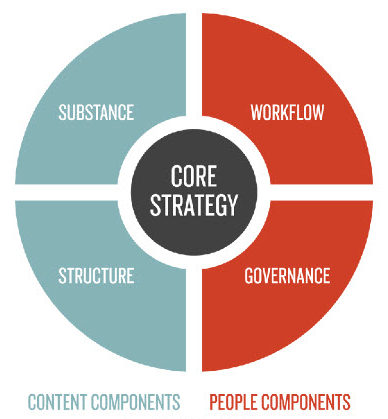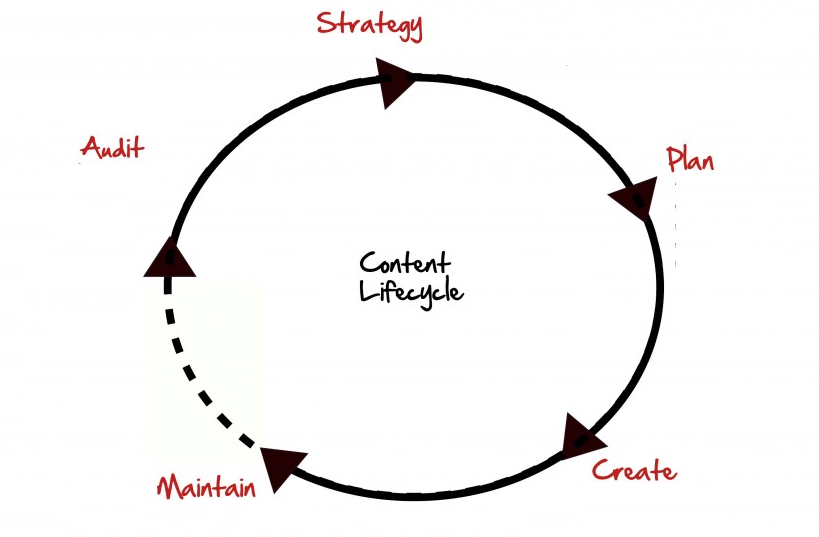Content has always been a powerful weapon for conveying messages and expressing emotions. In today’s world, content plays a major role in many professions such as authors, thought leaders, marketers, and designers. Did you follow us till the first three, but wondering how are we bucketing content in the design category?
When it comes to crafting user experience, the job doesn’t end at beautifying interface, content also plays a significant role. Before building screens, you should craft a strategy to make sure user emotions match with the tone and type of message. Content strategists here play an important role, they blend content smoothly with the designs to create a meaningful user experience. In the nutshell, the role of content strategist consists of the following four areas –

Substance
The content strategist is tasked with defining the tone and voice of the copy. It also includes creating a message architecture that caters to the relevant audience of the brand.
Structure
Fundamentally, they not just create content but also determine how to prioritize, organize, and assess content. This includes selecting the appropriate technology by collaborating with the development teams.
Workflow
They also take care of the managing and maintaining the content. Sometimes they have a content team but many times they are working alone. Strategist defines the roles, tasks, processes, and tools needed to create, edit, maintain and achieve content and ensure it appears to the right people at the right time.
Governance
Strategists are also the decision makers on the policies, standards, and guidelines that need to be followed within the team.

Content Strategy cycle and activities lined around each phase
Audit
- Strategist conduct stakeholder interviews to find out what are they trying to achieve with the content.
- This also includes creating a catalog of all the existing content being used in a project.
- The existing content and the content on partner, sister and parent sites need to be evaluated on whether it matches the goal they are trying to achieve.
- Competitor audit is done to analyze what content competitors are producing and are they able to achieve the desired results with that.
Strategy
- Audit helps in unearthing the different issues with the content, which helps in defining a core content strategy consisting of recommendations, setting priorities, and creating timelines.
- At this stage, the strategist also determines the areas of work, taxonomy, and key vocabulary that need to be followed across the site.
- Based on the user research and the goals of the product, the voice and tone that need to be followed are also finalized at this stage.
Plan
- Content strategist gathers requirements and identifies the types of content and staff responsible for content creation and maintenance.
- This helps in formulating the marketing plan for the team that needs to be followed and the message that needs to be delivered.
- They also finalize a content management system, designed to house all the content that appears on the site.
- The goals the team is trying to achieve are analyzed and it helps in narrowing the definition, structure, and fields in the CMS.
Create
- The first thing in the copy production is to create a governance model and finalizing the policies, standards, and guidelines that need to be followed.
- Then again the copy produced needs to go through the various editing and review process which are finalized at this stage.
- Moreover, content has to be compliant with brand guidelines and optimised for search engines.
Maintain
- It’s crucial to involve the stakeholders and gain their insights, which is essential for producing the thought leadership content.
- The schedule for regular weeding of the content is also finalized at this stage by creating a QC plan.
- This is also where analytics data is evaluated to check what’s working and what’s not and how the content is resonated with what we are trying to achieve with the site.
The cycle continues to the auditing stage from here.
The relationship of UX and Content strategy
Much before the user experience awareness, there was always a constant focus in designing interfaces and formulating content considering the taste and opinion of the users. If blended well, they could turn out to be a lethal combination, crafting a clear vision for the product. Let’s explore their relationship.
– Seamless user flow and delightful user interfaces are the outcomes of user experience. UX brings the same visibility to the content as well, making it readable, understandable, and scannable. The relevant visuals with a clear structure and interesting labels help users in accomplishing the task easily.
– A structure is crucial to make information easily available to the user. This is a major task for content strategists where they team up with UX to plan the types of content that needs to be created and how it will be organized and structured across the site.
– The UX brings user at the center of the design process. The information and clarity about users help in crafting the perfect content for the audience. The user personas are kept in mind for curating content. This helps in optimising the voice, tone and messaging and results in increasing conversions.
Summing up
Though sound conflicting, content strategy and UX have similar goals. The focus on user needs and expectations is crucial for user experience. However, everything goes for a toss if the messaging is not aligned with the experience. Plus, the experience should deliver seamlessly across multiple channels and devices. While strategists focus on pushing keyword optimised content, the designers struggle to strike a balance between design and messaging.
If you want your design to smoothly navigate users and deliver the message effectively, Inkoniq would love to help you.
